Adventure Comics #48 (1940)
by Ken Fitch & Bernard Baily
Just like Batman started out at “Bat-Man”, Hourman begins as “Hour-Man”.
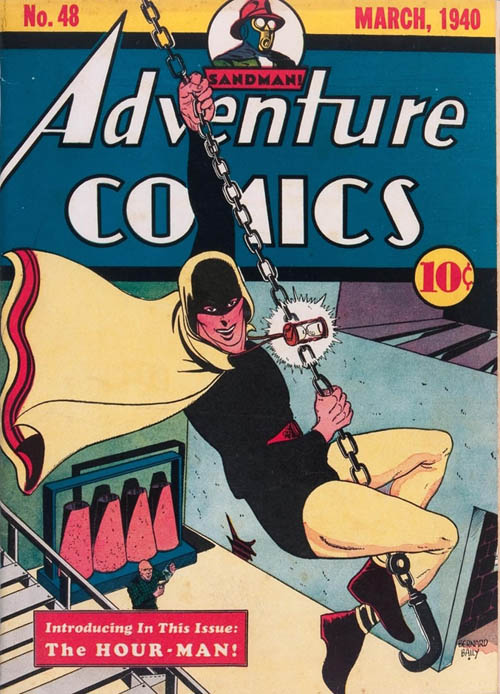
This is the first DC origin I cover where the origin story is relegated to an infodump.
I expect that from bland characters like The Shield and Comet, DC, not from you!

Maybe he should’ve called himself Postman, because Hourman’s idea of fighting crime is receiving letters to a PO box.

One of the letters asking for help is from a woman who is worried her husband is going back to work with his old criminal friends.
Well, at least it’s supposed to be a letter, but considering how much larger it is than a hand I guess she mailed a whole poster!
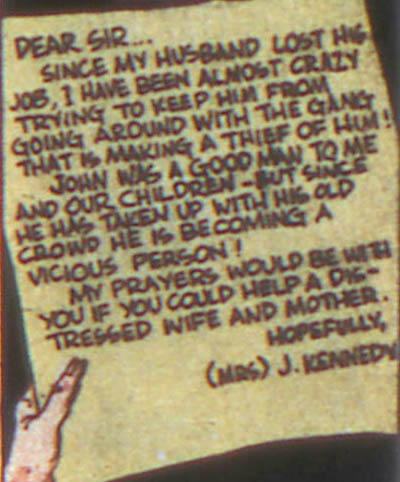
Hourman, don’t get the gimmicks mixed-up: sleeping gas is Sandman’s thing!
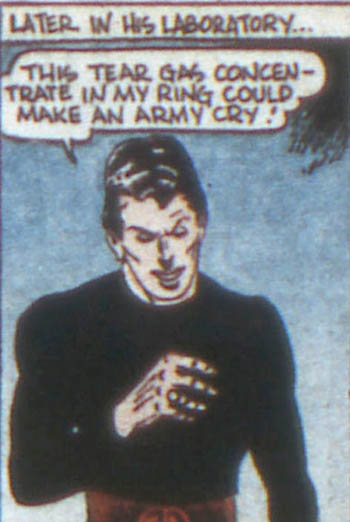
Having learned that from the woman that her husband plans a robbery, we end up at a fancy masquerade ball.
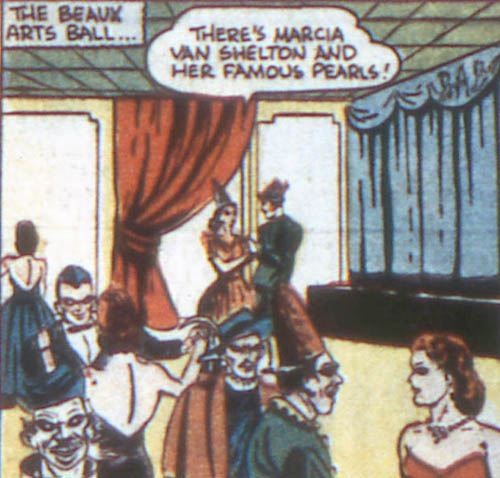
Before showing up, Hourman leaves a letter warning the husband. Less gigantic than before, but that’s still huge.
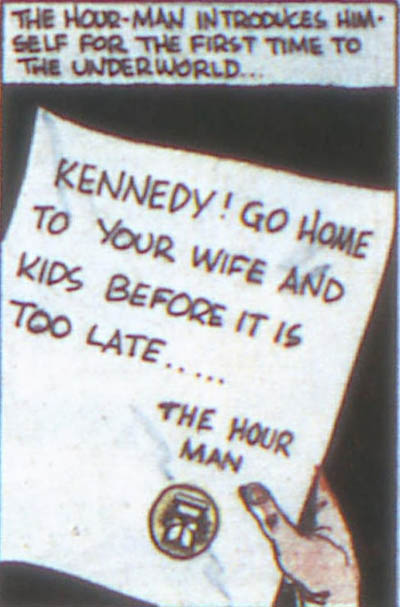
As mentioned in the infodump at the beginning, Hourman’s gimmick is that whenever he takes one of his Miraclo© pills he gains super-strength for one hour.
Warning: do not touch paper after assuming Miraclo.
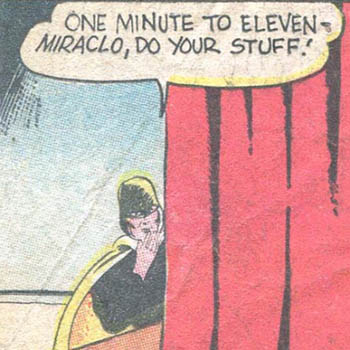
In addition to getting super-strenght, Miraclo© also gives Hourman night vision.
Warning: consult your doctor if you develop X-Ray vision after assuming Miraclo.
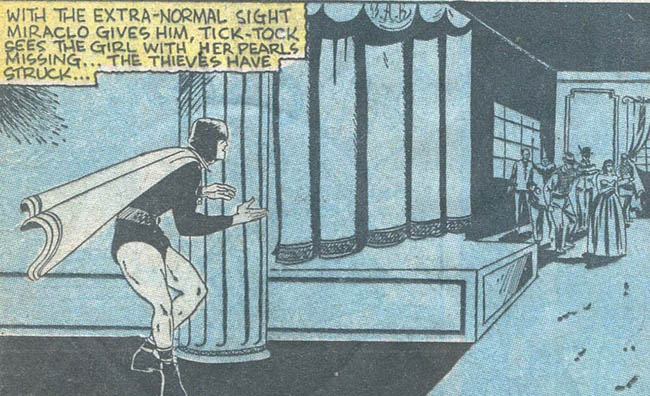
Okay I get he couldn’t arrest the criminals before they committed a crime, but did he HAVE to let them steal the necklace AND get away!?
Warning: do not attempt to solve crime after assuming Miraclo. You will suck at it.
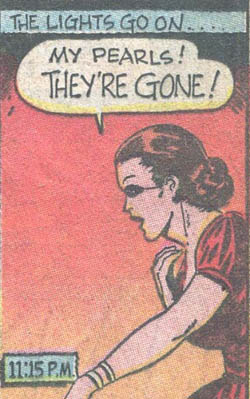
So Hourman has to follow the criminals ON FOOT. If he’s so fast, couldn’t he at least TRY to stop them before they got to the car!?
Warning: consult your doctor if you forget what powers you gained after assuming Miraclo.
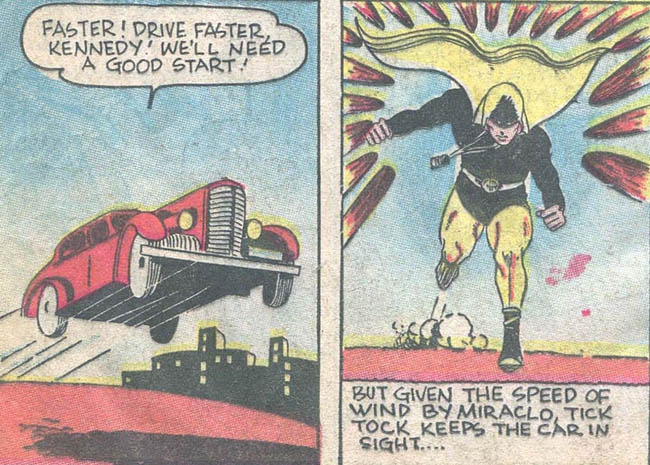
The police has been called to deal with the robbers, and honestly I have more faith in them than in Hourman since all he manages to do is get hit by the police car!!!
Warning: side effects of Miraclo include reduced spatial awareness. Do not assume Miraclo in traffic.
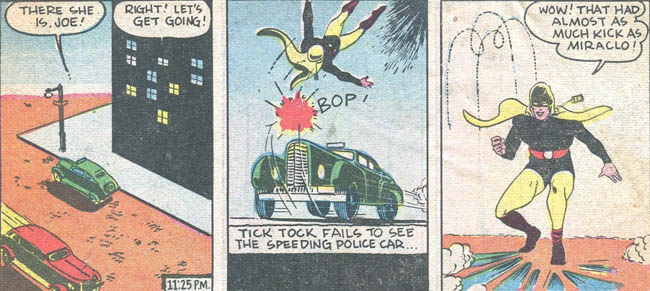
Hourman, I get this is your first case but you wasted almost an entire hour going after one very minor criminal!? You know time is a factor, right? It’s in your freaking codename!!!
Warning: consult your doctor if powers last more than one hour after assuming Miraclo.
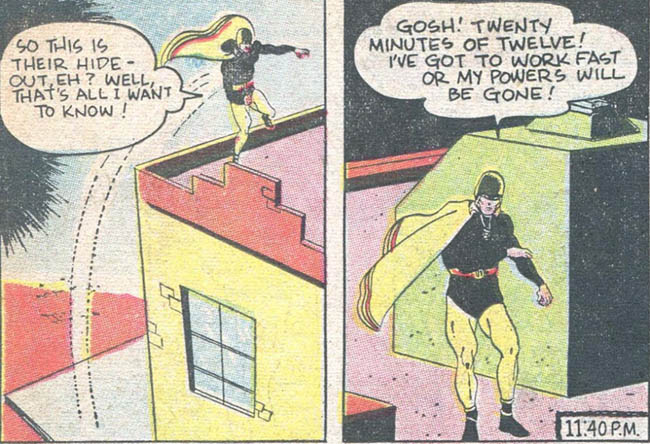
Seriously, Hourman, drop the sleeping gas gimmick. Sandman uses a gas gun because it looks cool; your gas ring doesn’t exactly instill fear.
Warning: side effects of Miraclo include involuntary gas release. Yeah I went there.
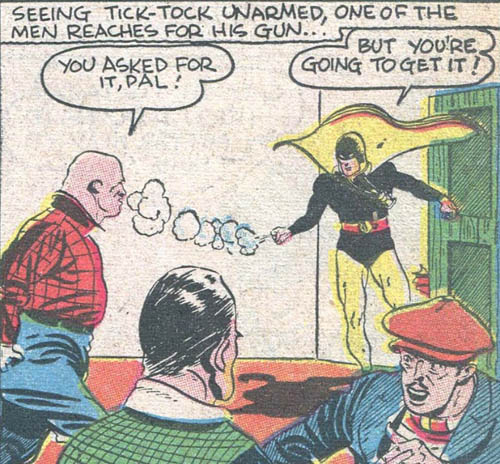
He then scares the crap out of the letter writer’s husband, convincing him to leave crime for good.
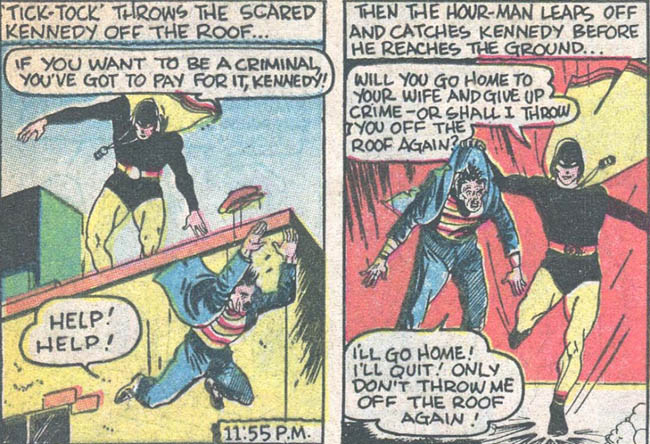
Sounds legit.
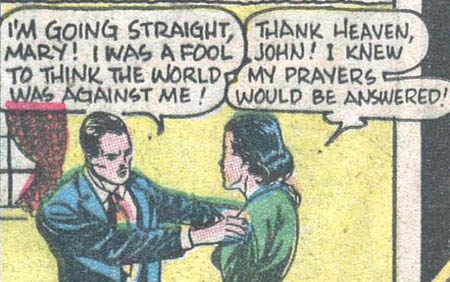
In addition to having a rather uninspired first mission, we end by discovering that Hourman has a twist on the “I’ll pretend to be a doormat so nobody suspects I’m a hero”… he’s not pretending.
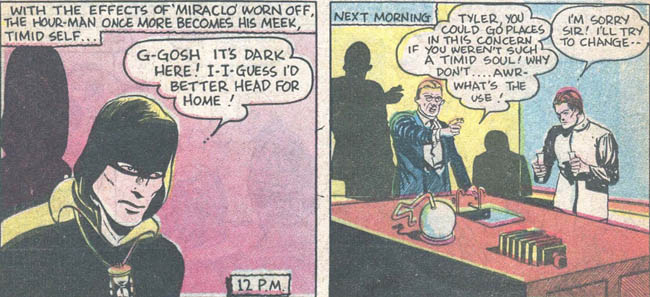
Warning: side effects of Miraclo include losing your spine.
As I’m doing for this early Golden Age, here’s the other serials in this issue.
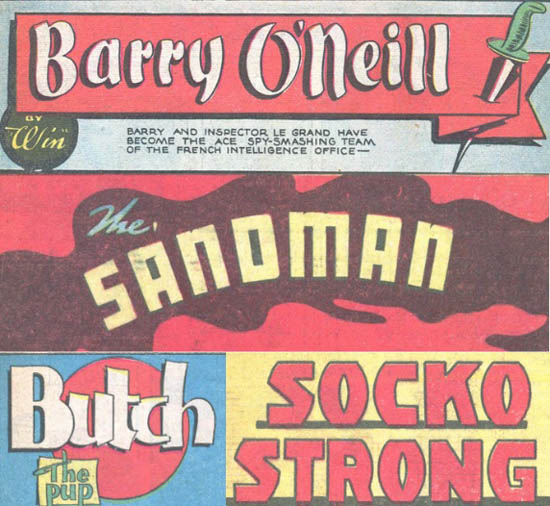
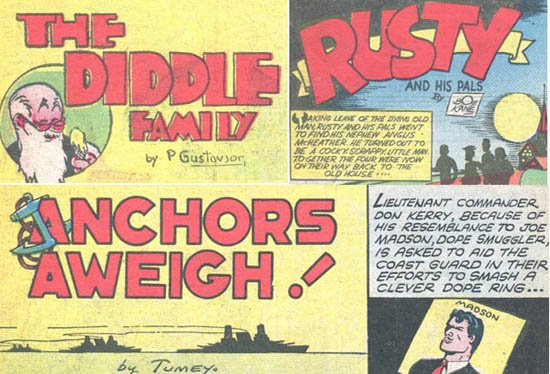

Historical significance: 5 / ![]()
I wouldn’t put Hourman among the most important Golden Age heroes, but he does manage a legacy.
Silver Age-ness: 0 / ![]()
Not really.
Does it stand the test of time? 0 / ![]()
What a letdown: this doesn’t feel at the same level of quality of the other DC origins I’ve covered so far. They weren’t all masterpieces, but they were far more competent and interesting than this.
Hourman doesn’t come off as particularly competent, his gimmick is barely a factor, the plot is as generic as they come, and the artwork is very rough even for the era.
How close is this to the modern character? It’s complicated
Hourman’s original serial didn’t last very long compared to his contemporaries, ending in issue #83 in 1943. He will be one of the founding members of the Justice Society in 1940, in All-Star Comics #3 (I will eventually cover that of course)… but he’ll be the first member to be dropped, being replaced by Starman in #8.
He would eventually come back in 1963 along with the rest of the JSA, making appearances here and there with his teammates.
The idea that Miraclo© was very addictive was slowly introduced; probably the most interesting ever done with Hourman, but the character didn’t seem to have much steam left and the original Hourman was killed (appropriately enough) in the Zero Hour event in 1994.
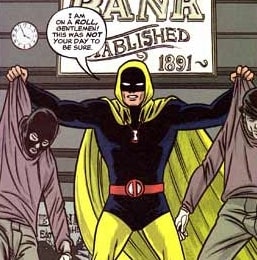
His son had already been introduced in the 80s on Infinity Inc, with a completely different costume…
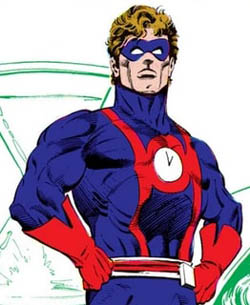
…but he eventually took on a variation of his father’s original costume.
I’ve never read any story featuring the second Hourman besides cameos, so I don’t know if he’s more interesting than his father.
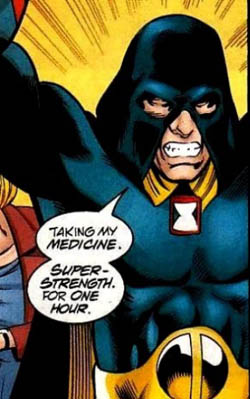
So far, pretty standard for a Golden Age DC hero. But the absolutely bonkers part is the THIRD Hourman: a super-android from the 853rd century with actual time powers, introduced in Grant Morrison’s JLA in 1997.
I found him very interesting on JLA, but his time to shine was his own regular series lasting from 1999 to 2001, which was COMPLETELY NUTS and very recommended if you’re into bizarre time-traveling shenanigans and android angst.
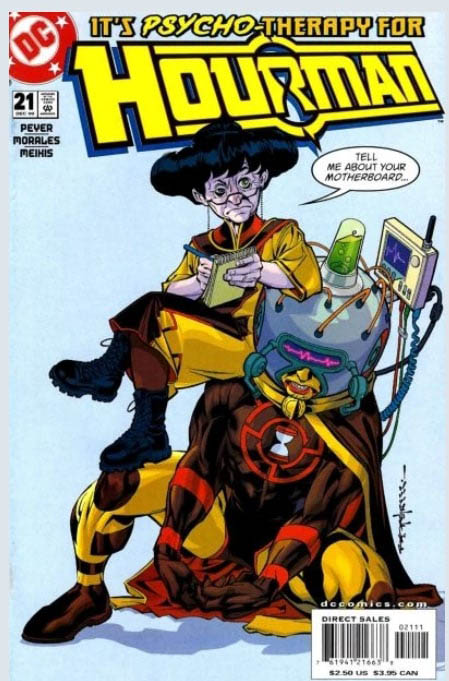
And of course, since we’re talking about comic books and characters that can time travel, the original Hourman has since been resurrected.
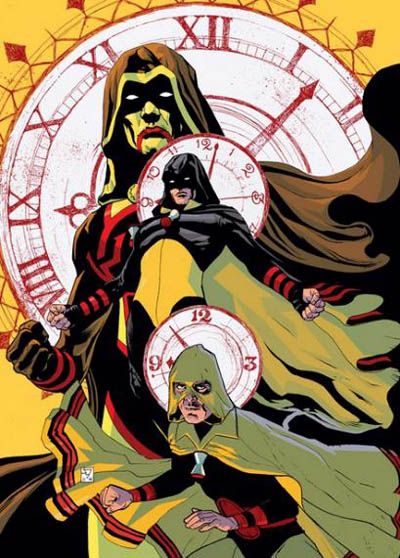
Other than the idea of the drug being addictive, I don’t think there’s enough to differentiate Hourman from many other superheroes.
The time-sensitive gimmick is a neat idea, but it would be better suited for something in live action or a cartoon, because it’s tricky to sell exactly how much time is passing in a comic book.
